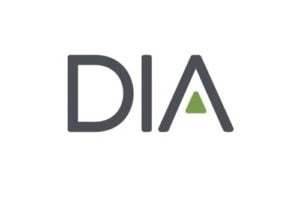Through compassionate use programs patients suffering from critical, life-threatening conditions can access potential life-saving therapeutic options which have not been formally approved by the responsible health authority in an ethical and regulated way. ChongXiang Tan, Fengyun (Vicky) Han and Annetta C. Beauregard of Janssen Pharmaceutical Companies of Johnson & Johnson discuss the need to evolve these programs in Asia Pacific.
Many health authorities in Asia Pacific (AP) have defined the compassionate use of unapproved therapeutic products in their pharmaceutical acts or regulations so that medical practitioners can request, on behalf of their patients, the import of unapproved medicines for treatment. The dynamic and diverse regulatory environment in Asia Pacific means that some markets have well-established guidelines on compassionate use programs while others are in the early stage of drafting guidelines. This article overviews the compassionate use regulatory landscape across this region.
Background
Drug development often takes years for the final product to come to market. The research and development and registration process for new medicines is time consuming, and unharmonized regulatory requirements across different local markets might even delay patients from accessing potential innovative new drugs. Compassionate use and named patient programs can expedite access to promising new therapeutics that can treat critical conditions in patients who have little time to wait.Regulations and laws govern use of unapproved investigational products under specific circumstances. These include life-threatening conditions for which there are no alternative effective or available treatment options; in some instances, only therapeutics involved in the final stages of the clinical trials, which have demonstrated sufficient evidence of efficacy, safety and quality, are utilized.
Compassionate Use Programs (CUPs) provide an ethical and valuable pathway for patients with life-threatening conditions to gain access to investigational drugs, biologics, and medical devices not yet approved in their market. These programs are generally intended for patients who are not eligible for clinical trials or have no therapeutic product commercially available in their market. Compassionate use is a term adopted by the European Medicines Agency and is synonymous with the US FDA’s Expanded Access.
The basis of these programs is similar but different markets use different terminologies, such as Compassionate Use Program (CUP), Named Patient Program (NPP), or Special Access Scheme (SAS). CUPs around the globe differ between each local market but generally require various prerequisites to be met.
National CUP, NPP, or SAS Regulation in Asia Pacific
In Australia, SAS provides the pathway for healthcare professionals and sponsors to provide patients with access to unapproved therapeutic goods, which are defined as products not entered in the Australian Register of Therapeutic Goods (ARTG). Before applying for SAS, requestors should verify that all ARTG therapeutic goods have been found clinically unsuitable and that the specific unapproved therapeutic good intended for import is not similar to any goods already on the ARTG and is not marketed in Australia. TGA has established three categories of SAS pathways depending on the patient status, type of therapeutic good, and health practitioner prescribing the good.
- Category A is a notification pathway which does not require TGA’s approval and is intended for seriously ill patients whose death is reasonably likely to occur within a matter of months or occurrence of premature death is likely in the absence of early intervention.
- Category B is an application pathway that requires TGA’s approval; it is dedicated to patients who do not fit into Category A and cannot access the unapproved good through Category C because the product does not have an established history of use.
- Category C is a notification pathway that does not require TGA and allows the supply of goods to the patient if that product has a well-established history of use.
- Notification pathways require a copy of the respective category forms to be sent to TGA within 28 days of the therapeutic goods being supplied to the patient.
In China, compassionate use is generally defined in the Drug Administration Law effective in 2019: “For drugs under clinical trial which are used for the treatment of serious life-threatening diseases for which there are no effective treatment and medical observations concluded that such drugs are beneficial and comply with ethical principles, such drugs may be used within the clinical trial institution on other patients with the same condition upon review by ethics committee and obtained patient informed consent.” The National Medical Products Administration (NMPA) has recently revised Regulations for the Implementation of the Drug Administration Law to supplement the conditions described in the Drug Administration Law: (1) physicians can offer the suggestion of compassionate use, provided that medical analysis has been made on the patient’s conditions, proving that the benefits may outweigh the risks, and the patient cannot participate in the clinical trials of drugs; and (2) the investigational drugs for compassionate use shall follow the patient’s voluntary request and conform to the principles of medical ethics and informed consent. After ethics committee review and approval, physicians with experience in using the investigational drugs or relevant training can administer the drugs in patients with similar conditions in the institution implementing the clinical trials.
Read the full article on the DIA Global Forum website.



